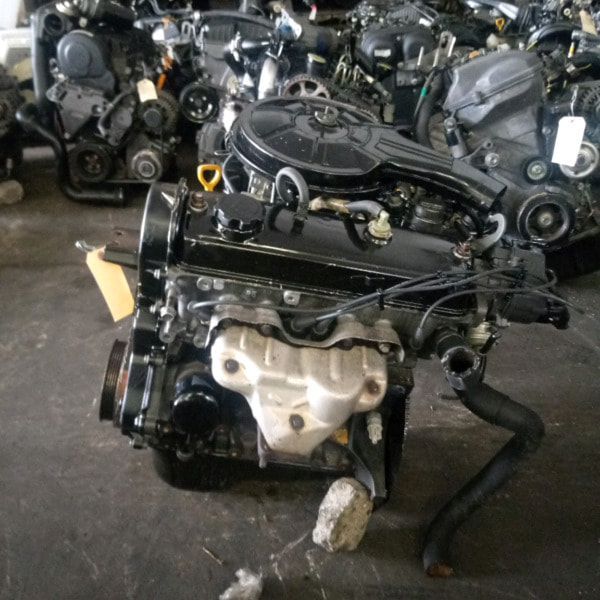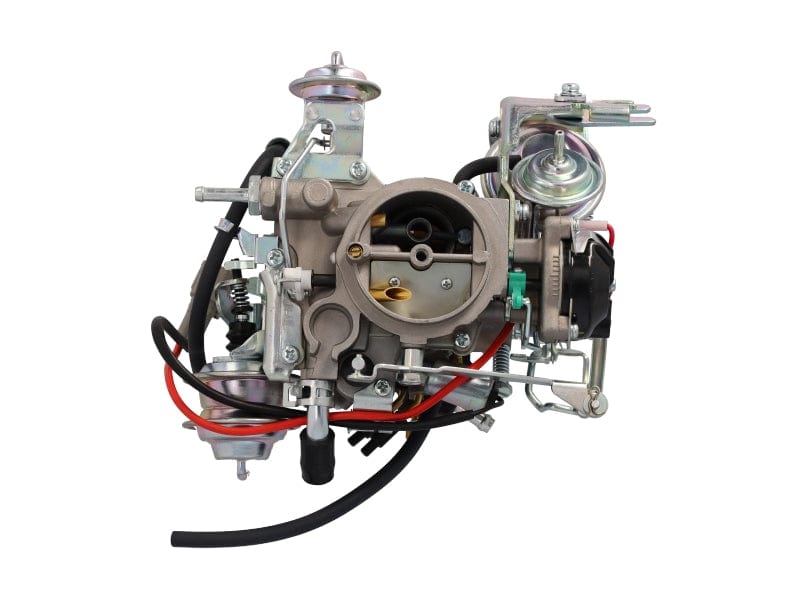Toyota Tazz: Why It Continues to Be a Trusted Vehicle for Daily Commuting
Toyota Tazz: Why It Continues to Be a Trusted Vehicle for Daily Commuting
Blog Article
Check Out the most recent Fads in Engine Innovation With Tazz
In the rapidly advancing landscape of automotive modern technology, Tazz stands at the leading edge, highlighting considerable advancements in engine systems that prioritize both technology and sustainability. From hybrid engines that enhance gas performance to the appearance of hydrogen gas cells, the fads forming modern-day powertrains are not just boosting performance yet likewise addressing vital environmental obstacles.
Crossbreed Engine Innovations
Hybrid engine technologies represent an essential change in vehicle innovation, integrating the benefits of internal combustion engines with electrical propulsion systems. This integration not only improves gas efficiency however additionally minimizes discharges, meeting progressively rigid environmental policies. By making use of both power sources, hybrid engines can enhance efficiency, delivering power when required while saving gas throughout less demanding driving conditions.
Recent improvements in crossbreed innovation consist of improvements in battery performance and regenerative braking systems. These technologies permit greater power recuperation during deceleration, which can be redirected to help in velocity or power auxiliary systems. Furthermore, manufacturers are concentrating on small layouts and lightweight products to make best use of the effectiveness of crossbreed powertrains.
The development of plug-in hybrids has additionally broadened the market, making it possible for chauffeurs to bill their lorries using conventional electric outlets. This attribute usually enables considerable all-electric array, additional lowering dependancy on standard gas. tazz. As the auto industry continues to advance, hybrid engine technologies are expected to play a crucial duty in bridging the gap in between traditional lorries and totally electrical designs, supplying a transitional service that deals with diverse consumer demands and preferences
Advancements in Electric Powertrains
The vehicle landscape is quickly advancing, with electric powertrains becoming a leading force in sustainable transportation. Advances in electrical car (EV) innovation are considerably improving customer, efficiency, and performance experience. Secret developments consist of renovations in battery chemistry, which have actually increased energy thickness, minimized billing times, and prolonged overall battery life.
Solid-state batteries, for instance, guarantee to transform the market by supplying better safety and security and performance compared to typical lithium-ion cells. Furthermore, developments in regenerative stopping systems are making it possible for lorries to recuperate power during deceleration, adding to general performance.
Along with battery technology, electric motor designs are coming to be much more innovative. Developments such as incorporated motors and advanced thermal management systems are helping to enhance power delivery and decrease weight, eventually boosting car dynamics.

Jointly, these developments emphasize the dedication to shift in the direction of cleaner, extra reliable transportation options, positioning electrical powertrains at the leading edge of automotive development.
The Surge of Hydrogen Fuel Cells
Increasingly, hydrogen fuel cells are gaining traction as a practical choice to typical internal burning engines and battery electrical lorries. This modern technology harnesses the chemical power kept in hydrogen, converting it into electrical power through an electrochemical reaction with oxygen. The key result of this process is water, making hydrogen gas cells an eco-friendly alternative with absolutely no discharges at the tailpipe.

Automakers are increasingly buying hydrogen gas cell innovation, identifying its potential for long-range applications and fast refueling capacities that rival traditional fuels. Additionally, fields such as durable transportation and public transit are especially fit for hydrogen gas cells, where battery electric remedies may fail due to weight and array constraints.
As research study and investment proceed to broaden, hydrogen fuel cells are poised to play a significant function in the future landscape of tidy transportation and energy services.
Enhancements in Internal Combustion Engines
Developments in internal burning engine (ICE) technology are transforming typical automobiles to meet modern ecological criteria this hyperlink and performance assumptions. Among the most considerable improvements involves the assimilation of innovative fuel injection systems. These systems maximize the air-fuel mixture, enhancing burning effectiveness and resulting in minimized exhausts. Direct fuel shot, as an example, permits much better atomization of fuel, resulting in even more complete combustion and enhanced power output.
Additionally, turbocharging has actually gotten prominence, enabling smaller sized engines to provide higher performance without the weight of bigger engines - tazz. This innovation not just improves performance however likewise adds to lower fuel intake. Variable valve timing systems are additionally being fine-tuned, enabling engines to adjust to different driving problems for improved torque and responsiveness
Additionally, making use of lightweight products in engine building and construction is ending up being typical, more improving fuel efficiency by minimizing total car weight. Engine control systems (ECUs) are increasingly sophisticated, making it possible for real-time changes that enhance efficiency and exhausts.
These enhancements collectively indicate an essential shift in ICE innovation, lining up with worldwide sustainability goals while still offering the performance drivers get out of their vehicles. As the sector develops, these improvements proceed to shape the future of conventional automobile engineering.
Future Patterns in Engine Effectiveness
Considerable developments in engine efficiency are anticipated as producers concentrate on incorporating cutting-edge modern technologies to satisfy rigorous environmental guidelines and consumer needs. The shift in the direction of electrification, crossbreed systems, and alternative gas try this web-site is improving the auto landscape, driving developments that boost gas economic climate and lower exhausts.
One of the vital patterns is the execution of innovative materials and manufacturing methods. Lightweight composites and high-strength alloys add to minimized car weight, therefore enhancing general effectiveness. In addition, the adoption of turbocharging and variable valve timing modern technologies enables improved power output from smaller sized engines, even more improving gas economic situation.

Verdict
Technologies in crossbreed engine systems, electrical powertrains, and hydrogen fuel cells show a dedication to minimizing discharges while improving performance. Enhancements in internal combustion engines and an emphasis on lightweight products contribute to overall engine performance.
From hybrid engines that enhance gas performance to the introduction of hydrogen fuel cells, the patterns forming contemporary powertrains are not just enhancing efficiency yet also resolving vital environmental obstacles.Hybrid engine developments stand for an essential change in automobile technology, integrating the advantages of internal combustion engines with electrical propulsion systems.In addition, turbocharging has gotten prominence, permitting smaller sized engines to deliver higher performance without the weight of larger engines. Additionally, the adoption of turbocharging and variable valve timing innovations enables for boosted power output from smaller engines, further improving fuel economy.
Renovations in interior burning engines and an emphasis on light-weight materials add to total engine efficiency.
Report this page